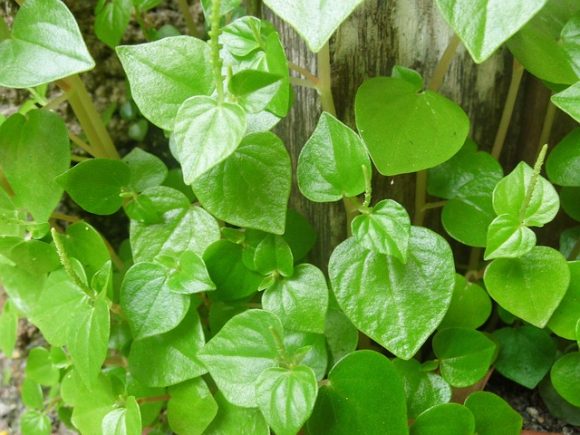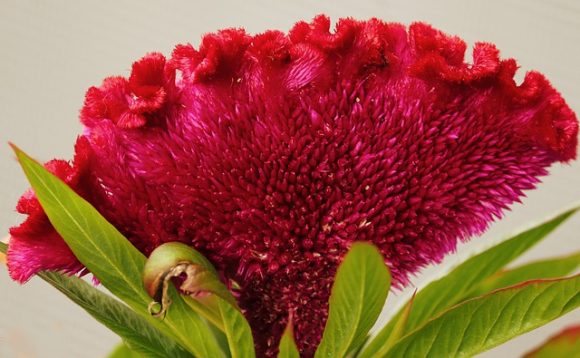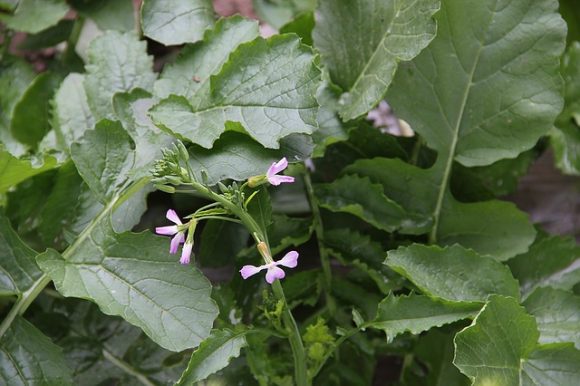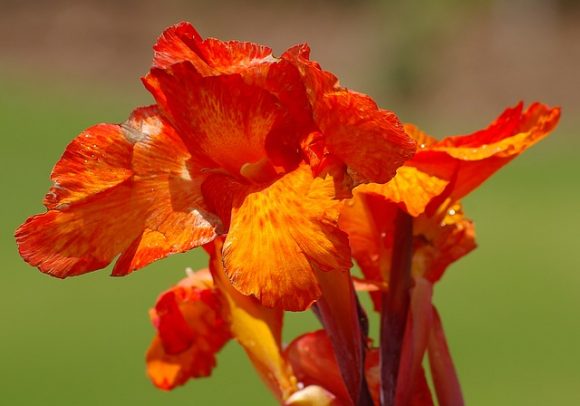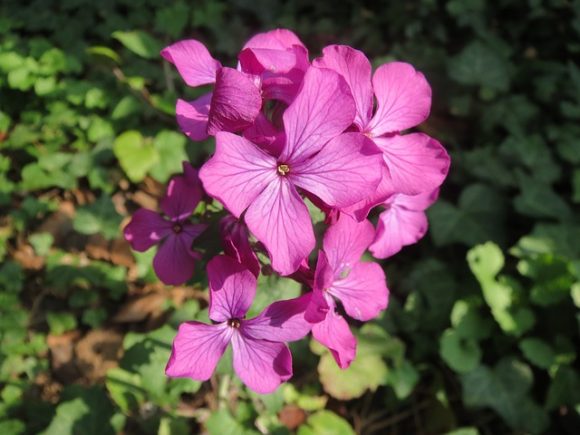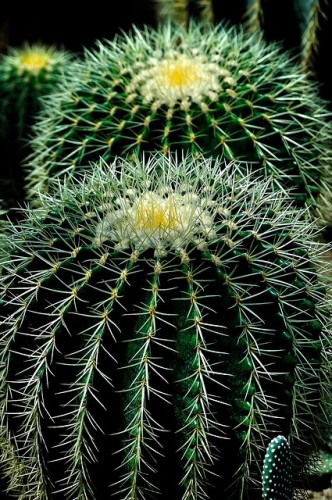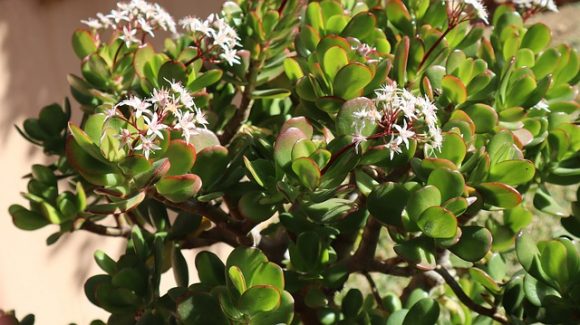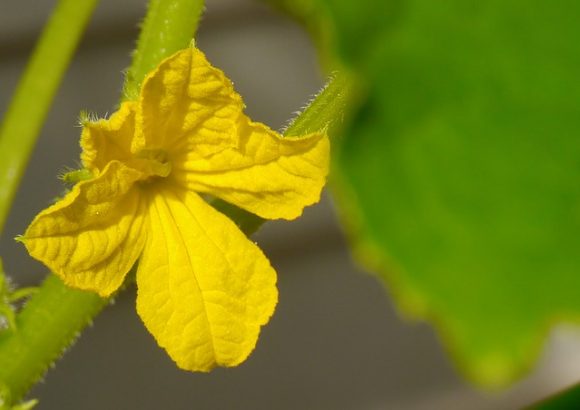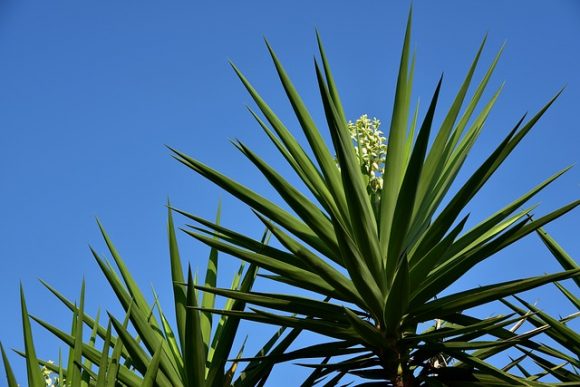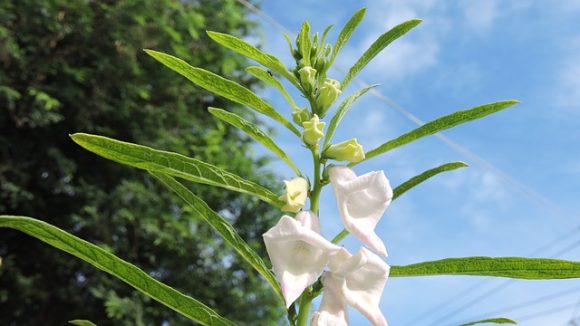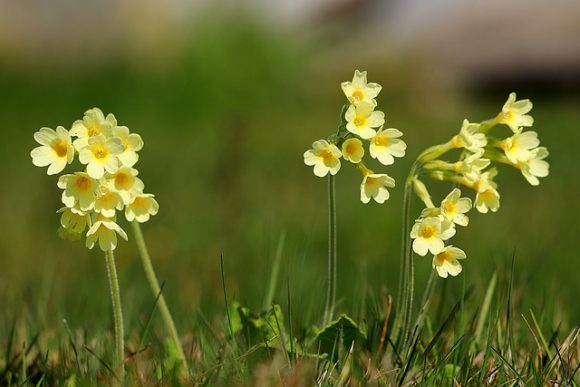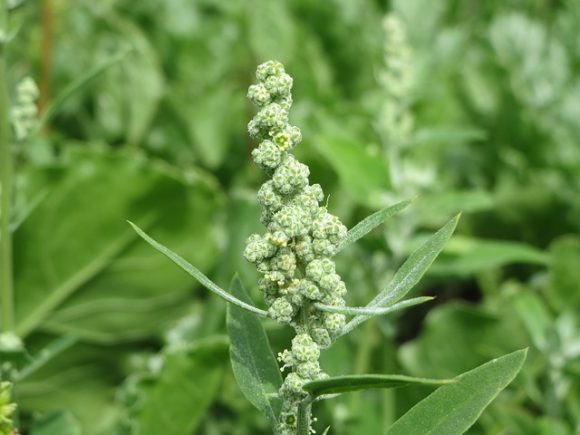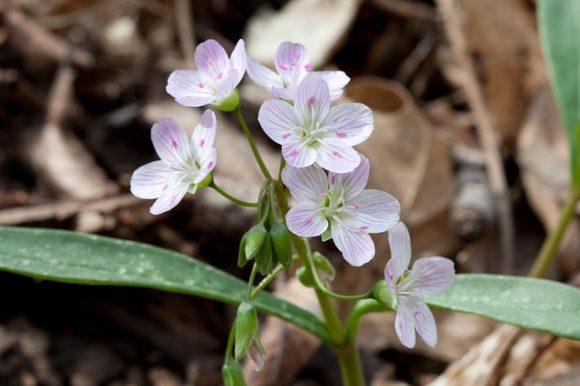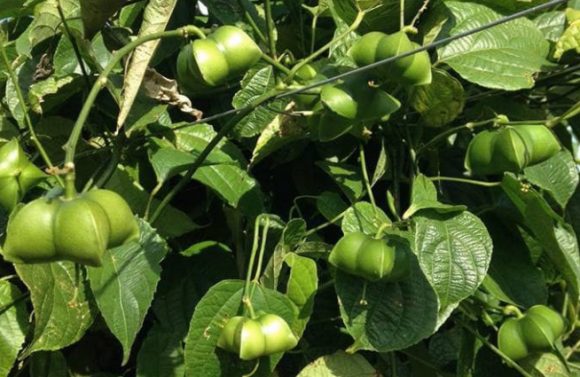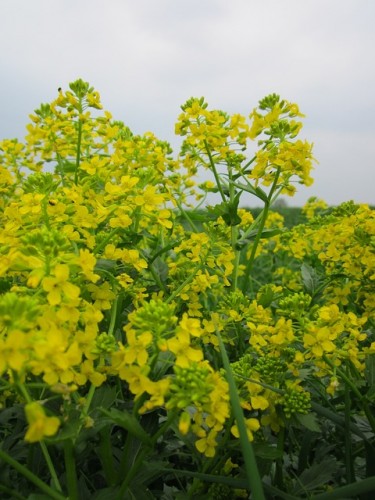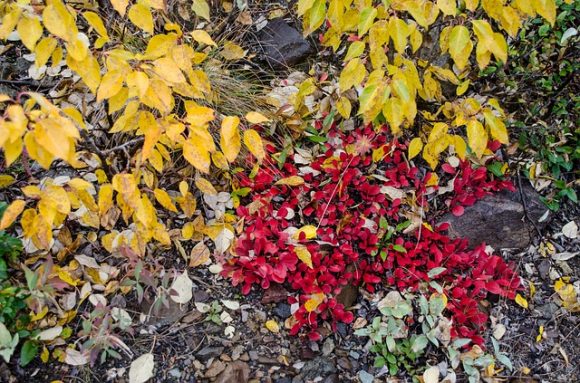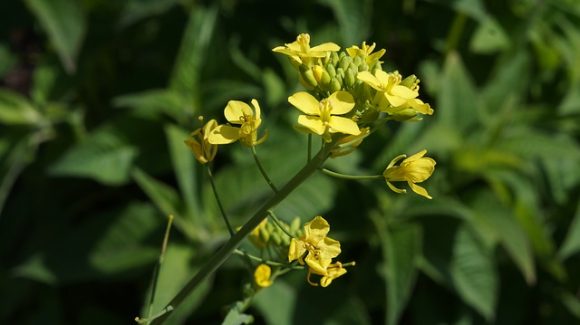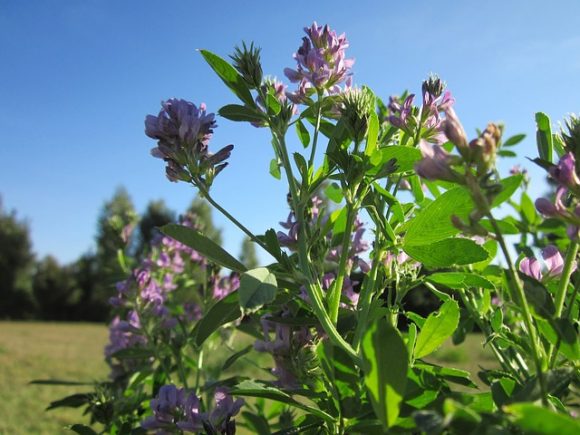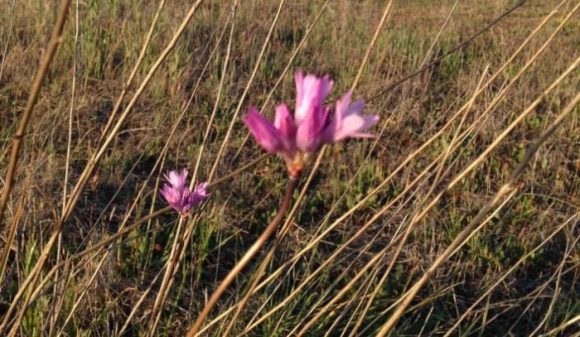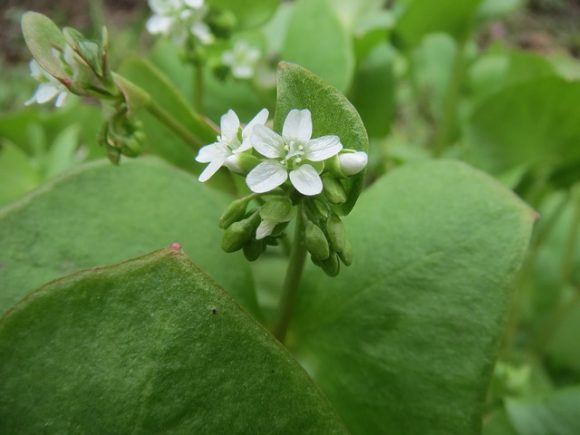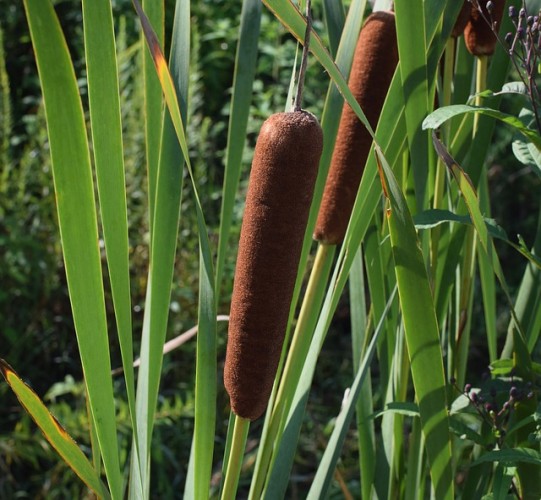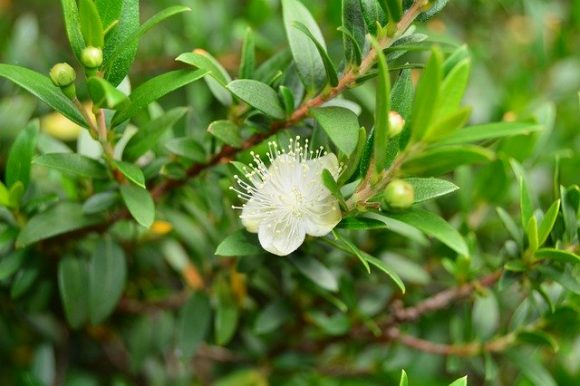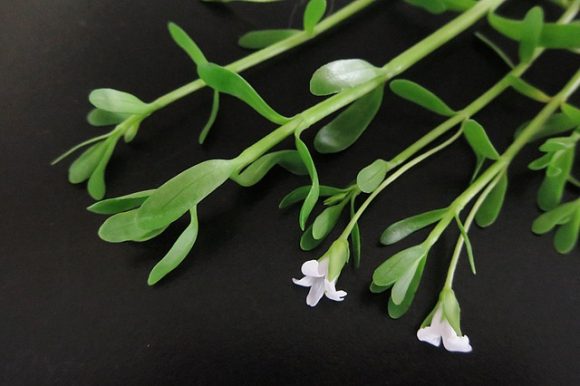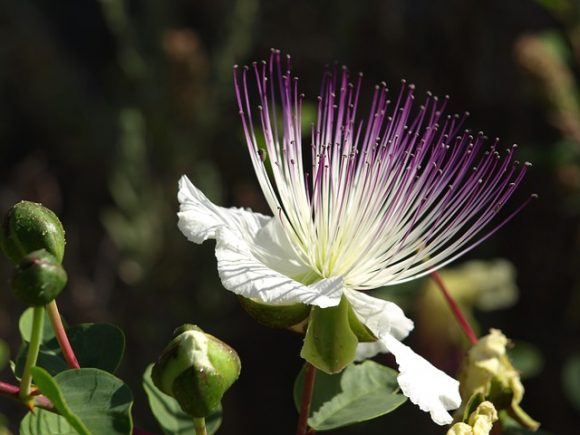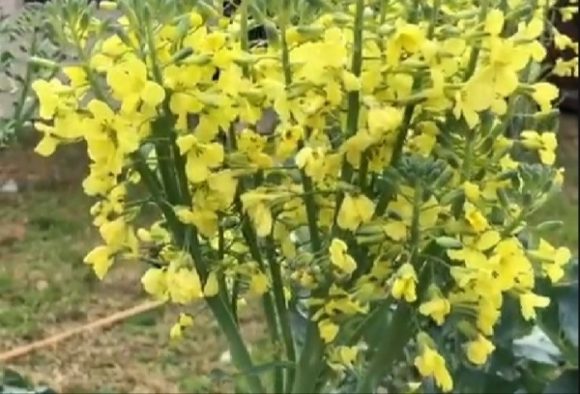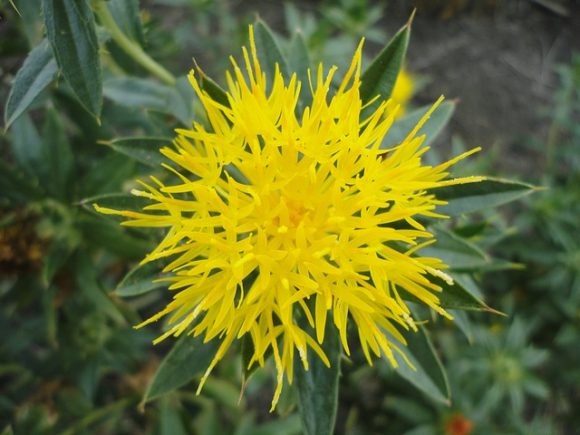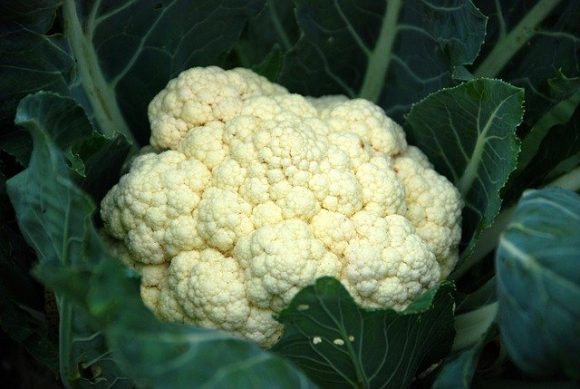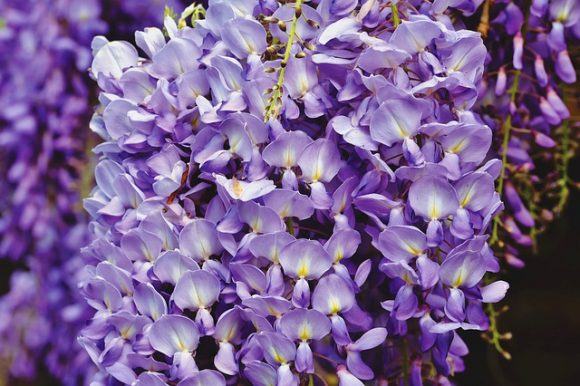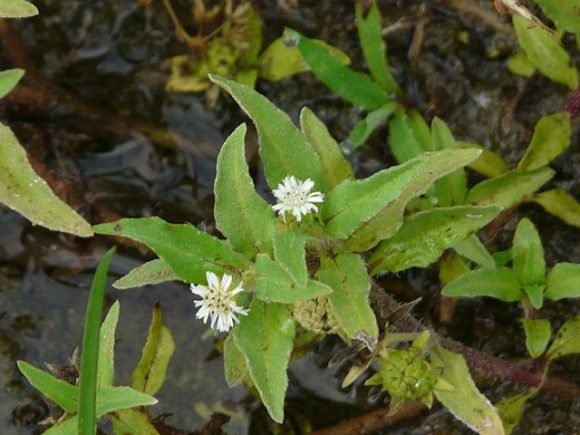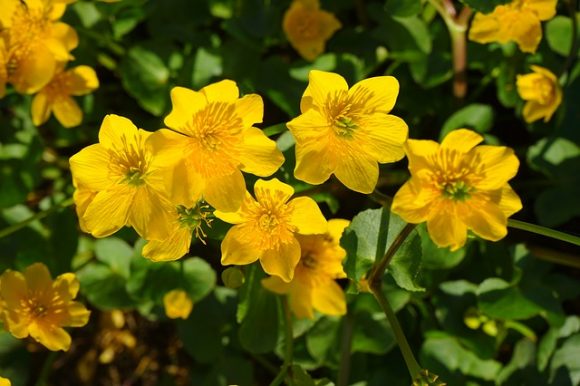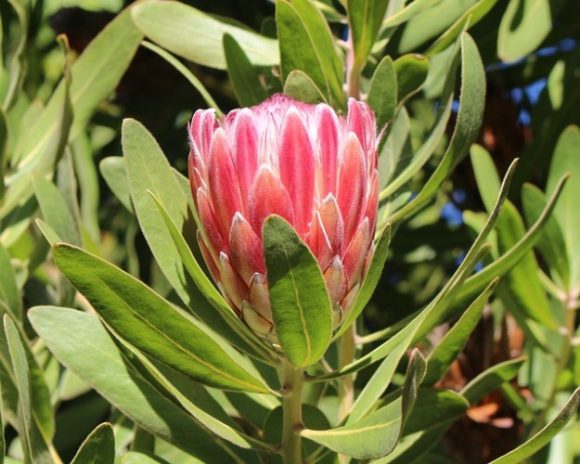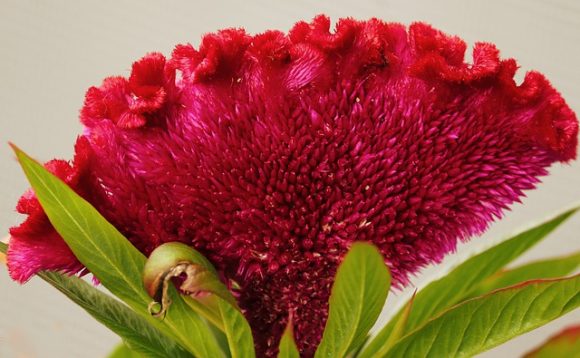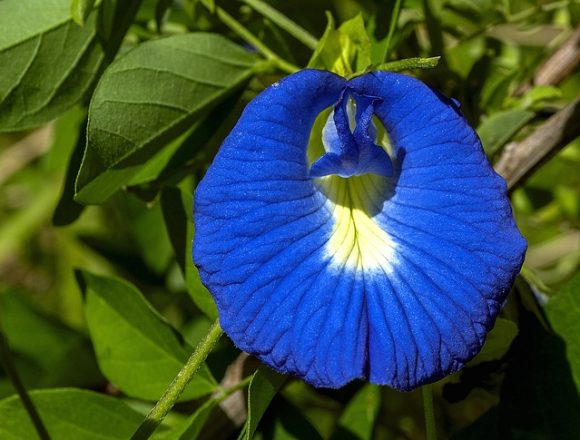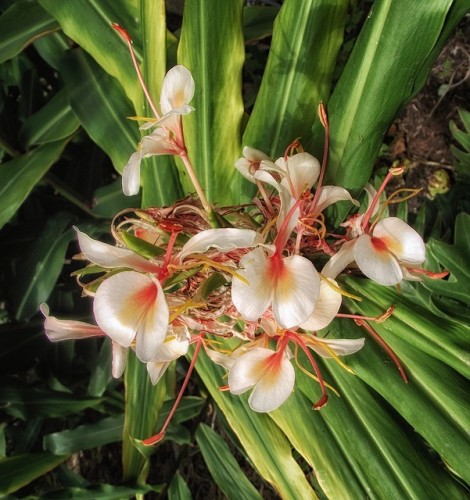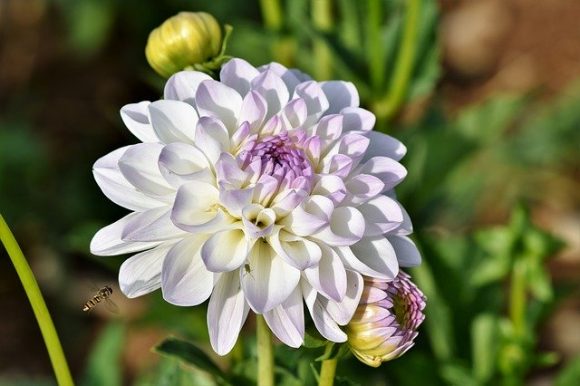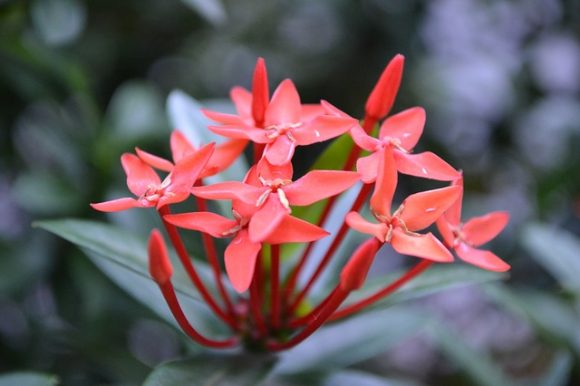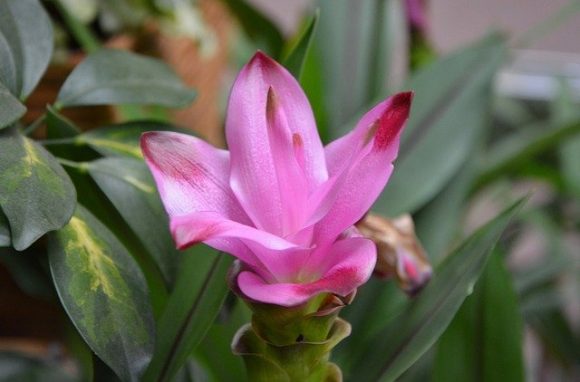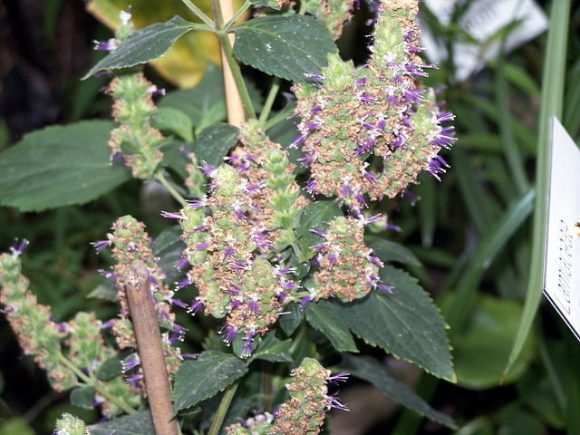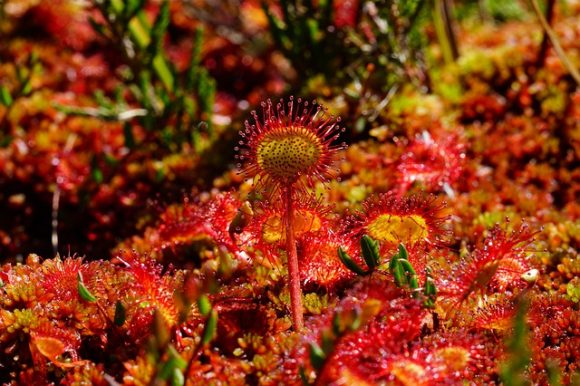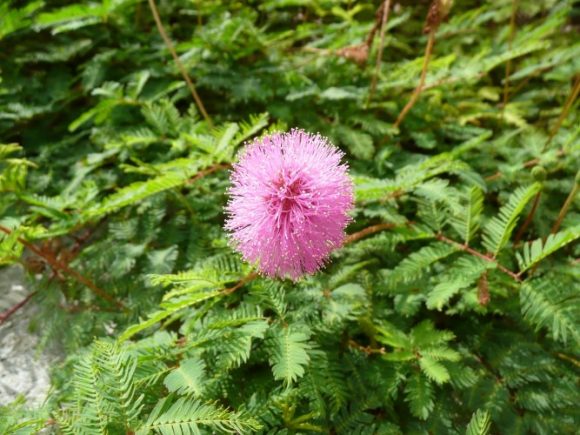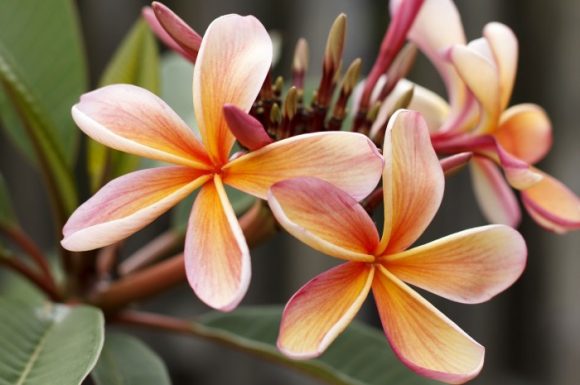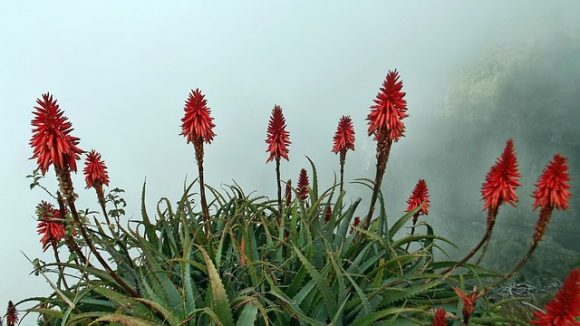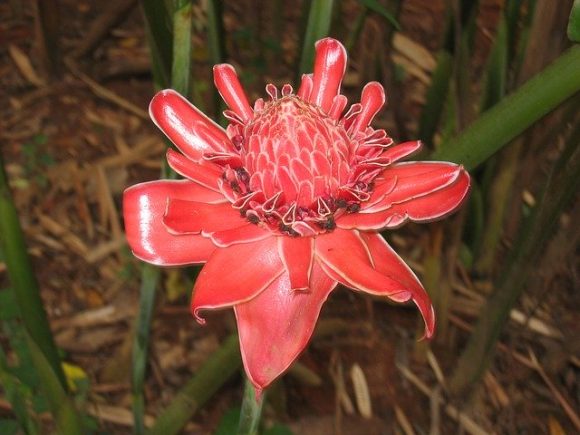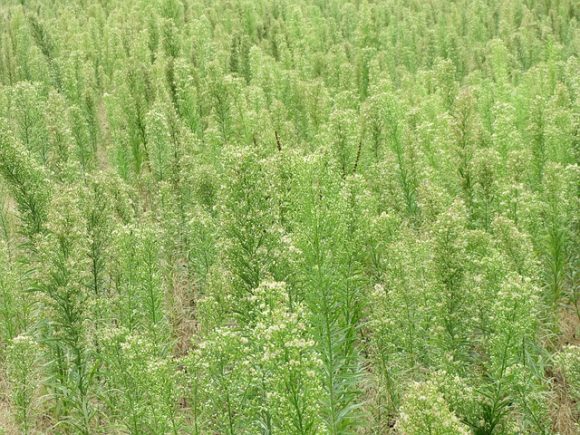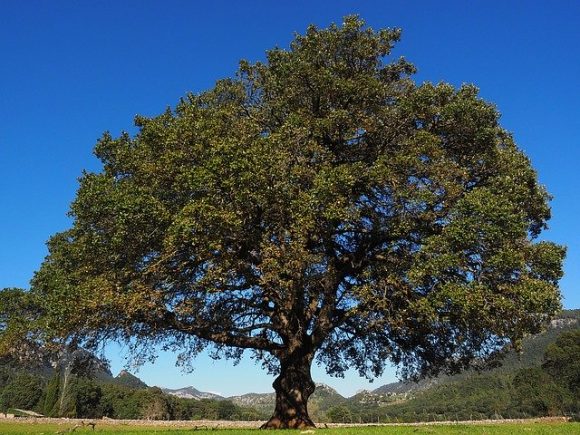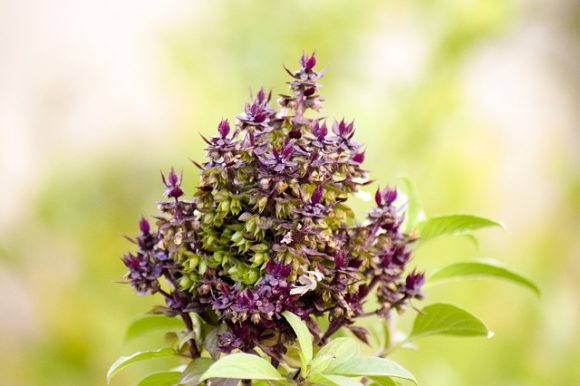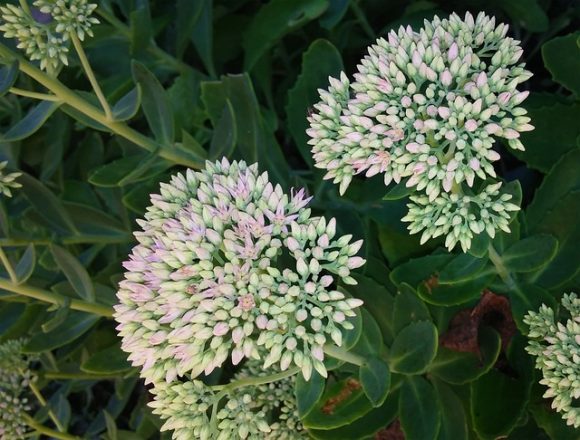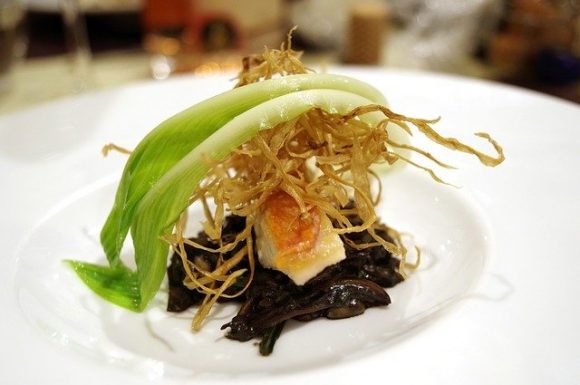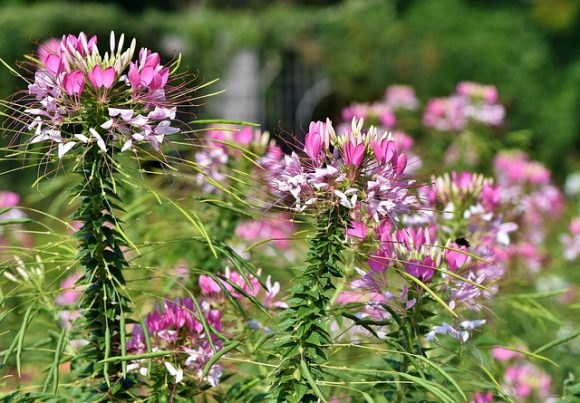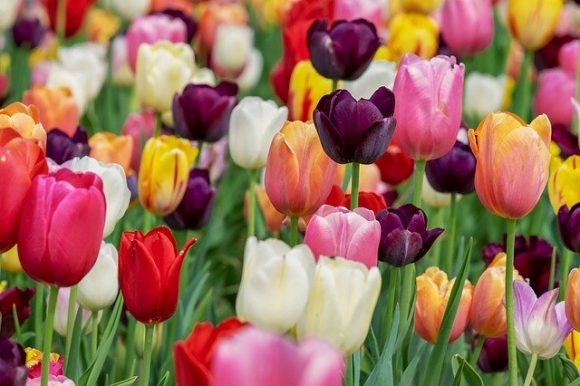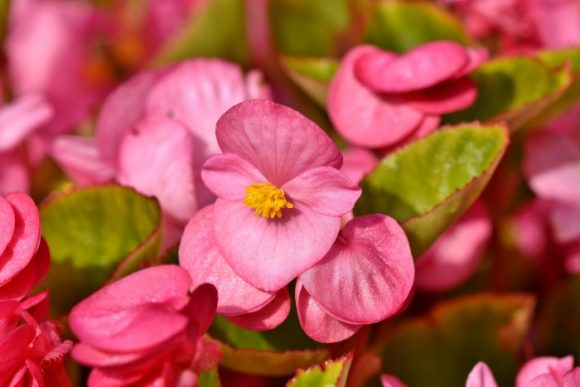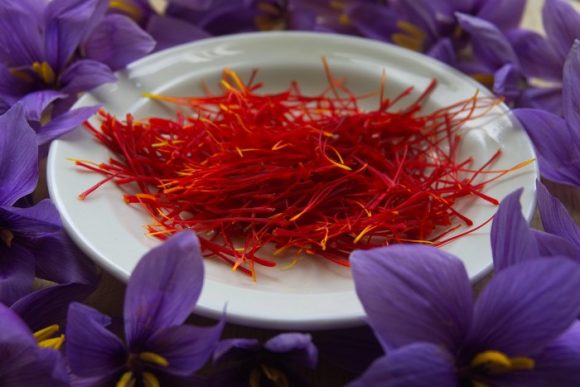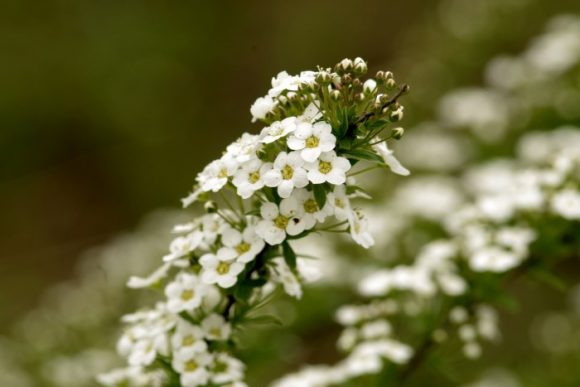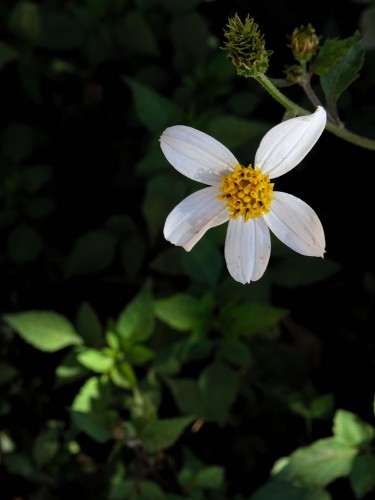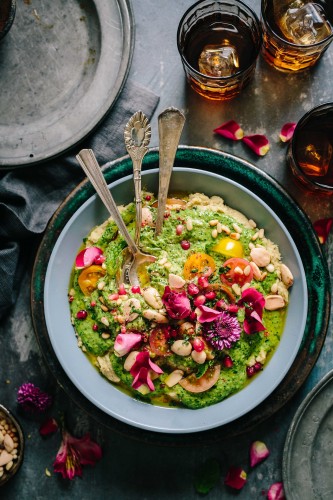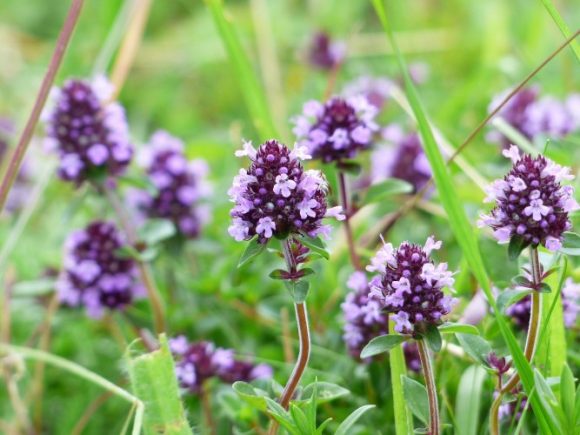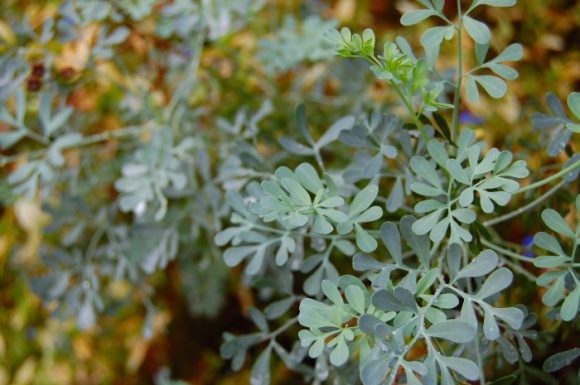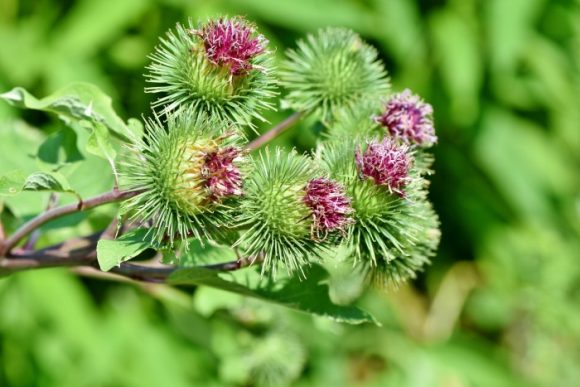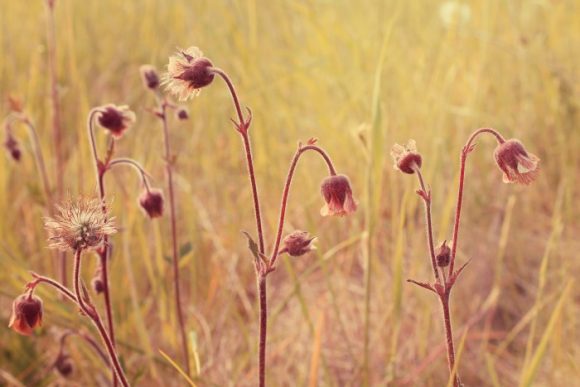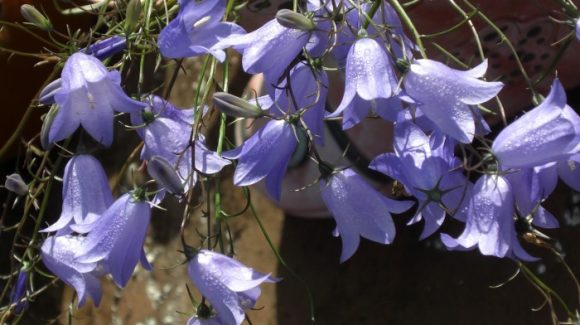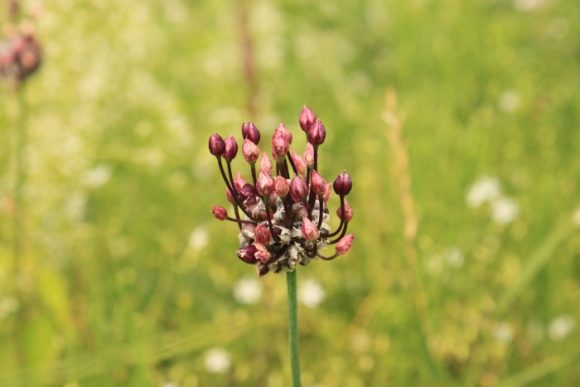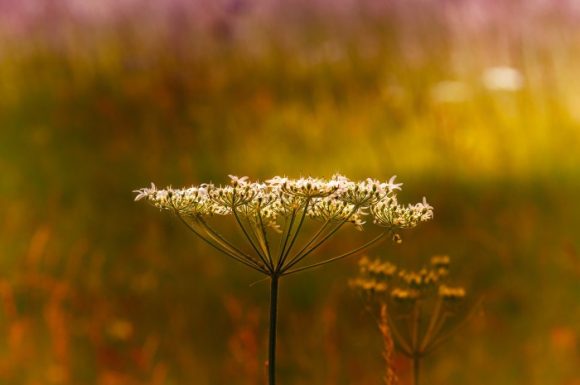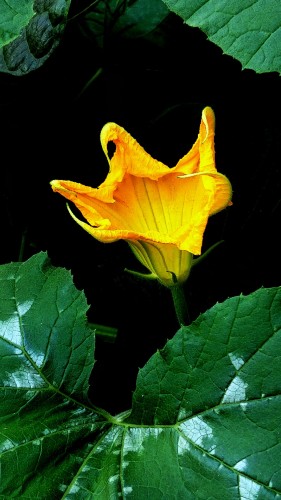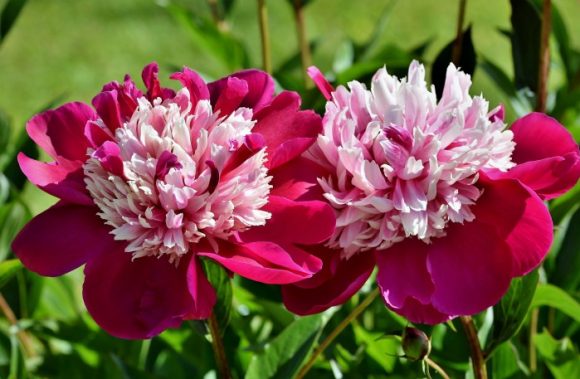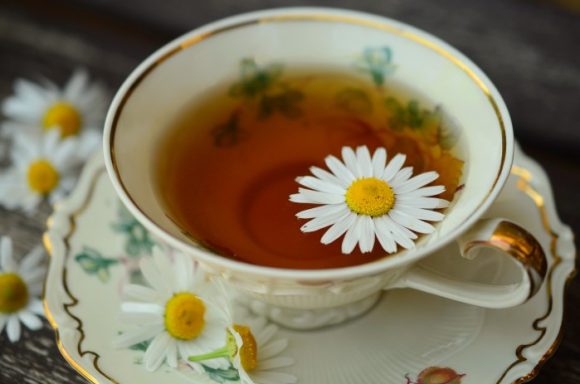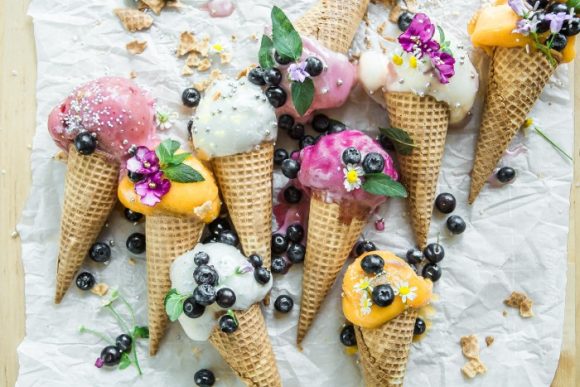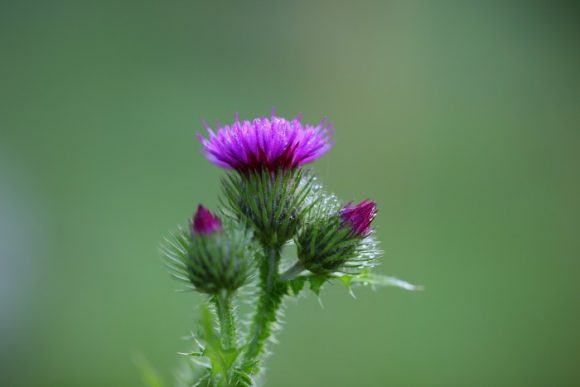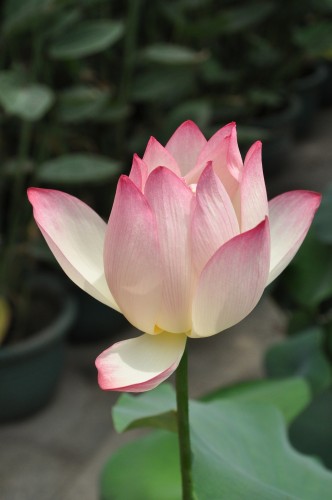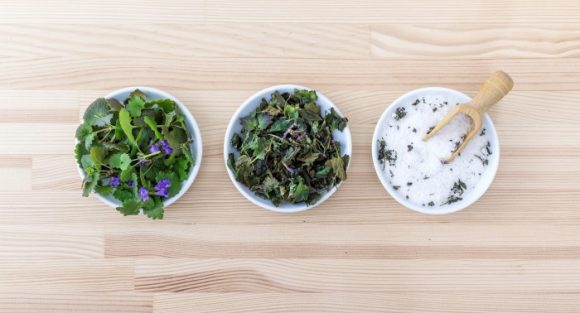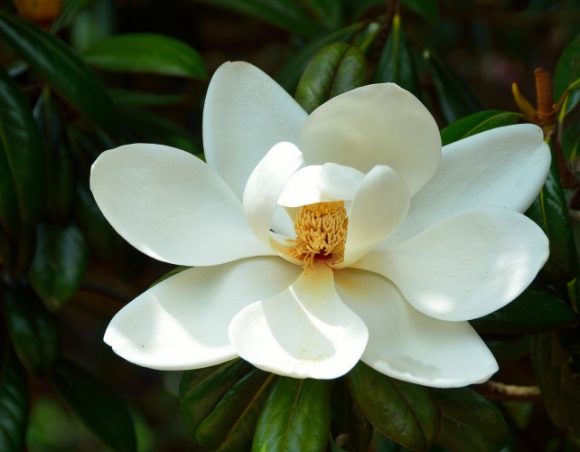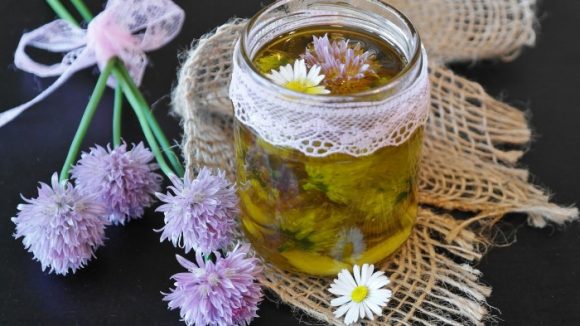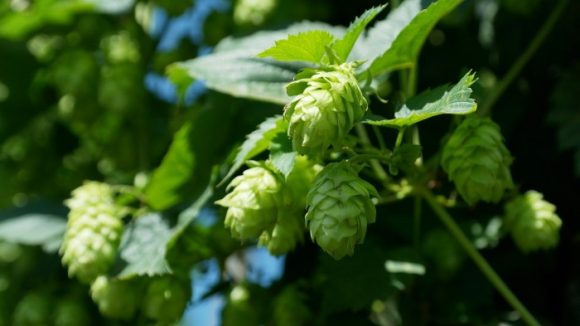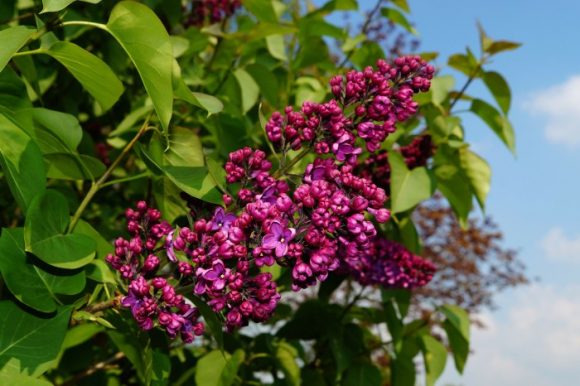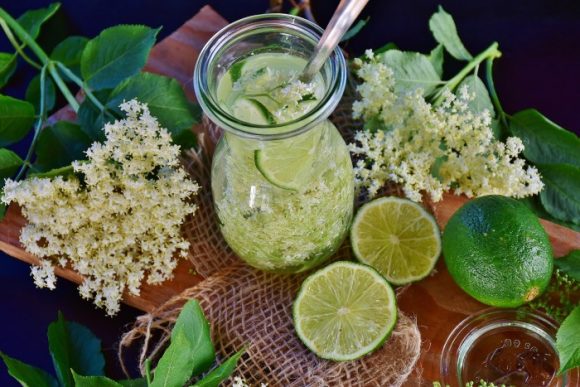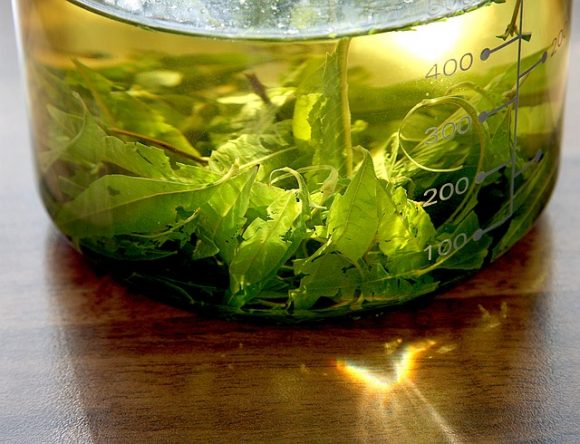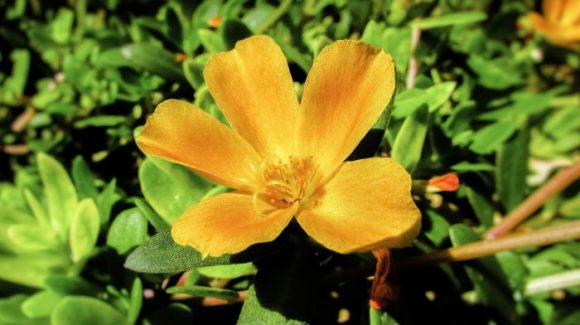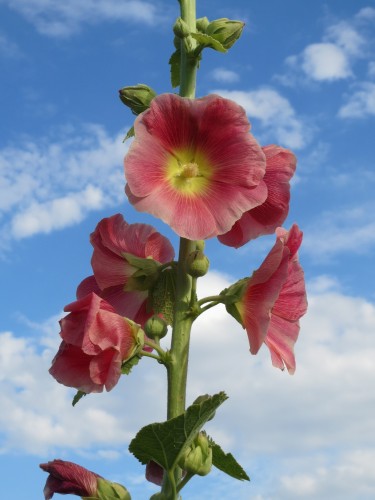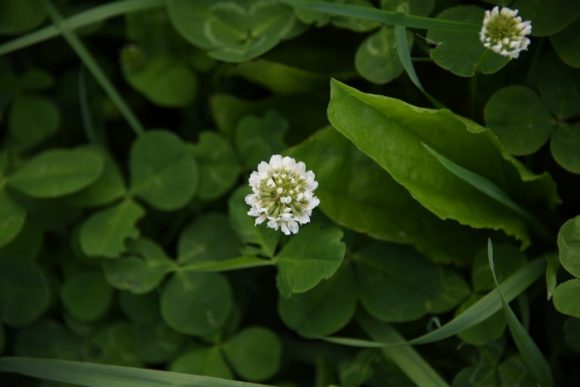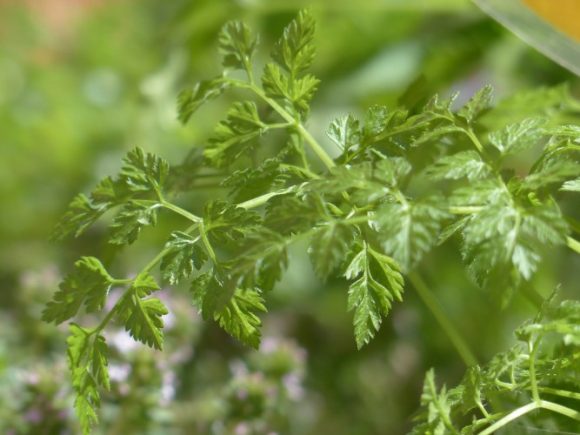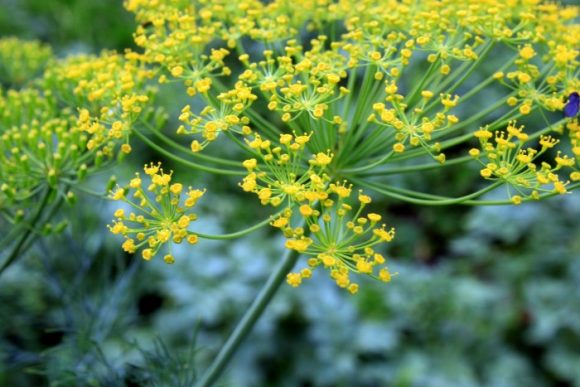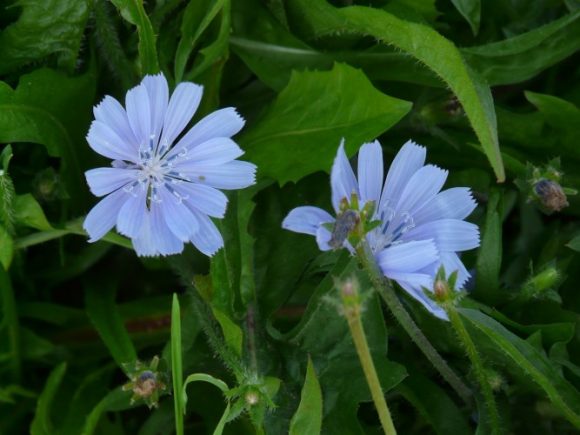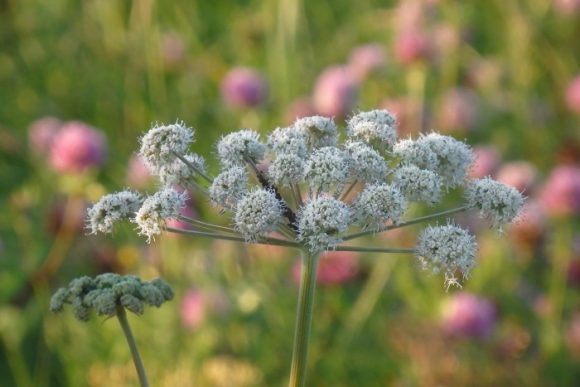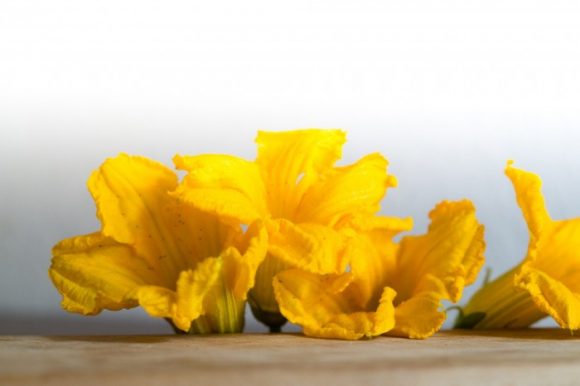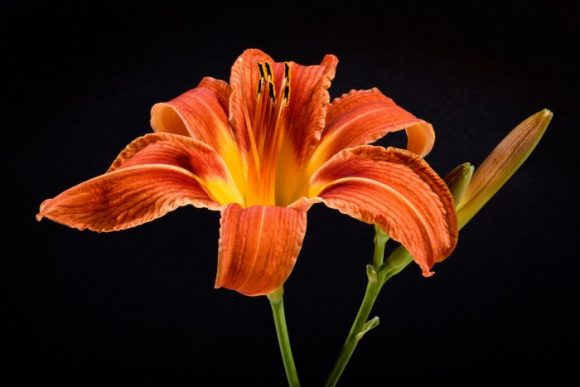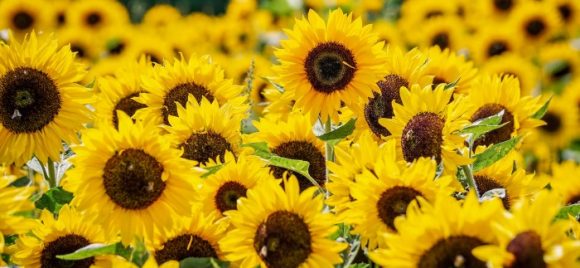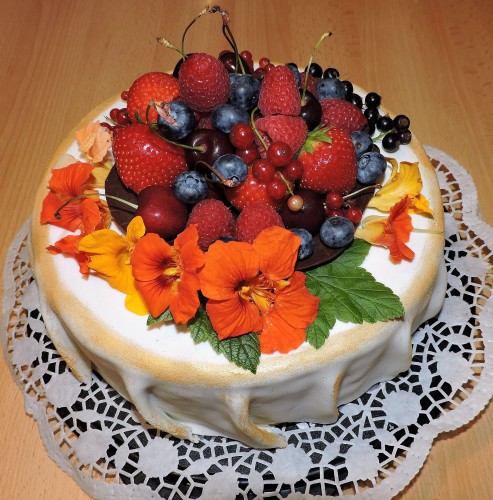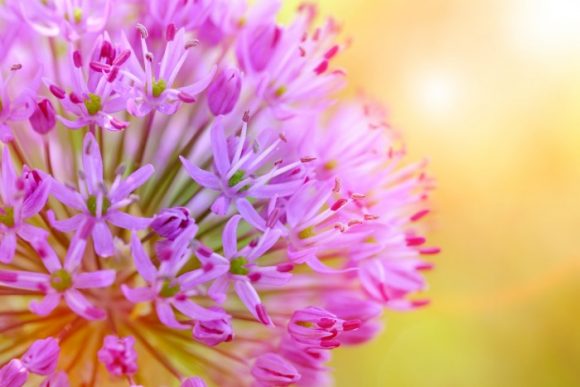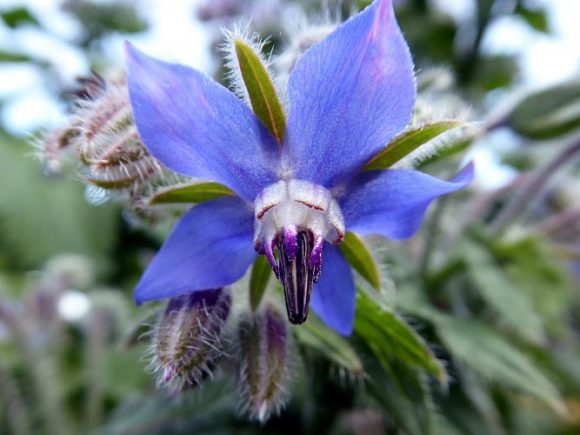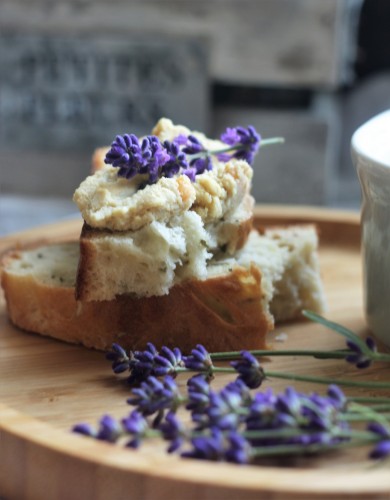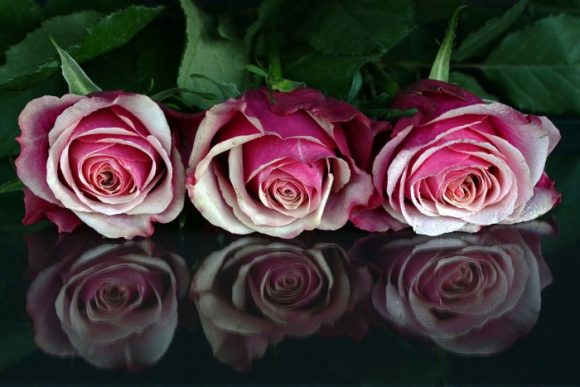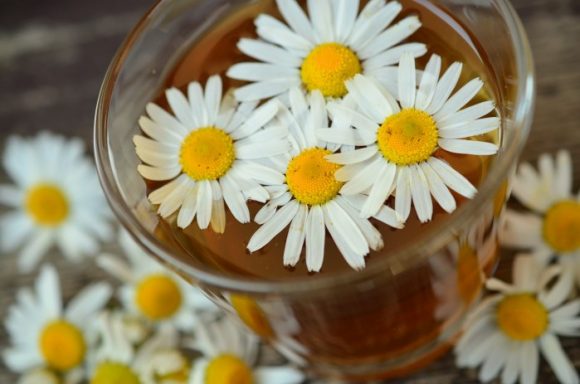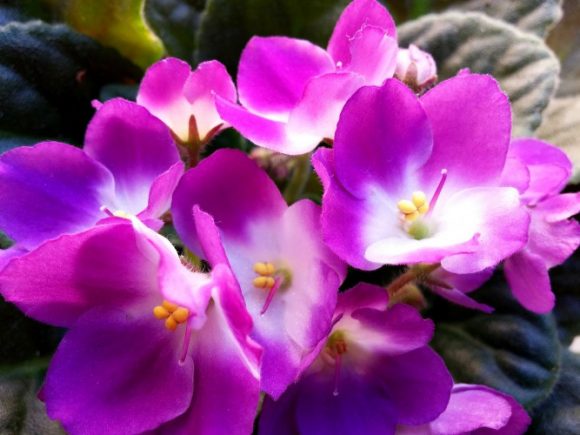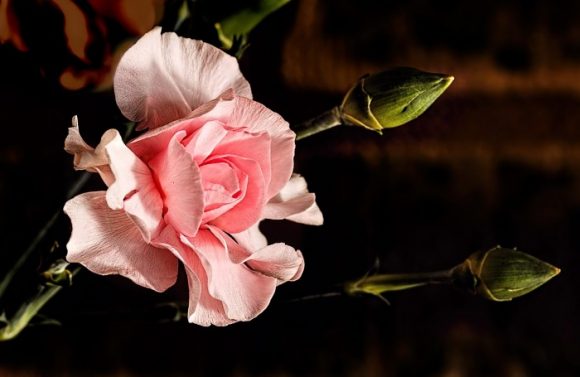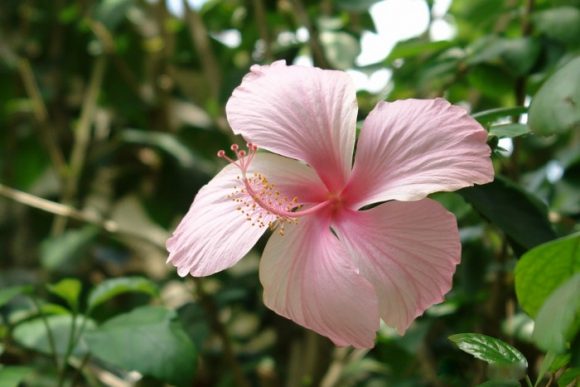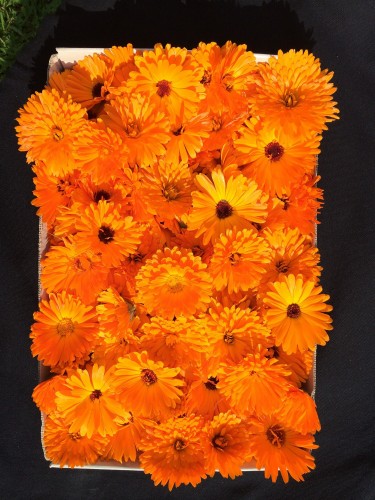Search Results for “”
The Miraculous Shiny Bush Plant
Peperomia pellucida, commonly known as the shiny bush, greenhouse, and tea plant, is an annual flowering plant in the piperaceae family. Continue reading [...]
Colorful, Edible and Medicinal Celosia
Celosia, commonly known as woolflowers, quail grass, and Lagos spinach, is a small genus of flowering plants in the amaranth family. Continue reading [...]
Radish, a Nutritional Power House
Raphanus sativus, commonly known as radish or humble mooli, is a biennial or annual flowering plant in the brassicaceae family. Continue reading [...]
Grow Your Cannas and Eat Them Too
Canna plant, also known as canna lily (it is not a true lily) is a perennial, rhizomatous, flowering tropical herb. Continue reading [...]
Its Time For Honesty
Lunaria annua, also known as common honesty, garden honesty, moonwort, or silver dollar plant, is a biennial plant in the brassica family. Continue reading [...]
Hoodia Gordonii For Hunger and Thirst Suppression
Hoodia gordonii, commonly known as bushman's hat, hoodia cacti, or just hoodia, is a spiny, succulent, cactus-like plant native to the desert region of Southern Africa. It occurs naturally in Namibia, Botswana, and South Africa, but has spread to other regions of the world, including North America, due to their beneficial purposes. Continue reading [...]
Want To Attract Money and Friendship? Get The Jade Plant
Crassula ovata, commonly known as jade plant, pink joy, jade, happy jade plant, jade tree plant, happiness plant money plant, and lucky plant, is an evergreen plant native to the southern region of Africa. The plant has spread and gained popularity in most parts of the world due to its beauty and versatility making it a perfect houseplant. Continue reading [...]
Cucumber Flowers: Fry or Use Them for Garnishing
Cucumis sativus, commonly known as the cucumber plant, is an annual flowering plant belonging to the cucurbitaceae family in the cucumis genus. The genus consists of more than 40 species including the popular watermelon and cantaloupe. Cucumber is also known as kiukaba, cetriolo, and pepino. Continue reading [...]
Yucca Blossoms: Yes, You Can Eat The Dashing Flowers
Yucca filamentosa , commonly known as yucca, is a flowering evergreen shrub in the asparagaceae family. It is native to the dry, hot regions of West Indies and the Americas.
The plant is highly adaptable which has helped it spread to other regions of the world.
Yucca is easy to identify due to its unique rosette of lance-shaped, succulent leaves, and large off-white or white blooms. Continue reading [...]
Sesame: An Edible Plant With Herbal Uses
Sesame, benne, or sesame indicum, is a strong-scented, flowering plant
commonly cultivated as a food crop. It has dark-green leaves with
serrated edges. Benne produces white rose, or light purple,
bell-shaped blossoms with pink streaks or spots. The flowers give way
to small, sausage-like pods enclosing pear-shaped seeds. Though not
very common due to its high-value oil, sesame is sometimes grown as an
ornamental plant due to its beautiful blossoms. Continue reading [...]
Cowslip: The Underused Herbal and Edible Flowering Plant
European cowslip, common cowslip, cowslip, and botanically known as primula veris, is a flowering perennial native to the Northern Hemisphere. It thrives in hedgerows, meadows, and slopes. Continue reading [...]
Mexican Tea for Upset Stomach
Dysphania ambrosioides, commonly known as Mexican tea, wormseed, Jesuit tea, and epazote, is an annual flowering plant that naturally occurs in the tropics and subtropics. Epazote features long and slender dark green leaves with jagged edges. It produces tiny green flowers that give way to thousands of small seeds. Continue reading [...]
Virginia Spring Beauty: For Food, Medicine and Weather Purposes
Claytonia virginica, commonly known as Virginia spring beauty, fairy spud, eastern spring beauty, grass-flower, or just spring beauty, is a low-growing, pretty, perennial wildflower, and delicious vegetable. It is native to North America and thrives in sunny river banks, well-watered woodlands, and thickets. Continue reading [...]
Sacha Inchi, The Climbing Superfood
Sacha inchi, Inca nut or Inca peanut, and botanically known as plukenetia volubilis, is a woody, perennial climbing plant in the euphorbiaceae family. Though sacha inchi is known as Inca nut, it's not a nut per se but a seed. Continue reading [...]
Bearberry: Food For Bears and Humans Too
Arctostaphylos uva-ursi, commonly known as bearberry or pinemat manzanita, is a low-growing, evergreen plant of the heath family. It is native to Europe, Asia, and North America. The plant’s glossy and leathery green leaves normally take on a purple or red tinge in winter before turning to green again in spring. Continue reading [...]
Tatsoi Flowers: Crunchy Delicacies
Brassica rapa, commonly referred to as tatsoi, spoon mustard, tah tsai, and spinach mustard, is a biennial, low-growing plant. It is native to Asia and considered an ancient vegetable but has been introduced to many parts of the world including North America. Continue reading [...]
Alfalfa, The Superfood Used as Fodder
Alfalfa, or lucerne, and botanically known as medicago sativa, is a perennial flowering plant belonging to the fabaceae family. It originated from Central and South Asia but it escaped cultivation and is now grown in most regions of the world as a high-value fodder crop. Continue reading [...]
Blue Dicks: The Edible Flowers With a Giggly Name
Dichelostemma capitatum, commonly known as blue dicks, or wild hyacinth, is a perennial wildflower with a funny-sounding name. Continue reading [...]
Miner’s Lettuce: Miner’s Staple and America’s Gift to Salad
Claytonia perfoliata, commonly known as miner’s lettuce or Indian lettuce, is a small, herbaceous, mildly succulent annual plant in the montiaceae family. Continue reading [...]
Common Cattail: Swamp’s Grocery Store
Typha latifolia, also known as common cattail, corn dog grass, bulrush, broadleaf cattail, or just cattail, is a perennial plant in the cattail family. It is native to North and South America, Australia, Europe, and Africa. The grass-like plant commonly occurs in marshland, ponds, swamps, wet thickets, and bogs. It thrives in moist soil on the edge of riparian areas in places with plenty of sunshine. Continue reading [...]
Lemon Myrtle, the Super Herb
Backhousia citriodora, commonly known as lemon myrtle, or sweet verbena, is a subtropical flowering shrub native to Australia but is now grown around the world. Continue reading [...]
Gotu Kola, The Herb of Longevity
Gotu kola, Asian pennywort or Indian pennywort, and botanically known as centella asiatica, is a herbaceous, perennial plant in the apiaceae family. It is native to Africa, Asia, and Australia. Continue reading [...]
Flinders Rose (Caper) : The Mediterranean Floral Cuisine
Flinders rose or caper is a small, edible flower bud growing on the bush of capparis spinosa or caper bush. The shrub is native to Asia and the Mediterranean region. Caper bush belongs to the caper family which is closely related to the mustard family. If the unopened capers are not picked in time, they open up resulting in beautiful, pink-white flowers. Continue reading [...]
Time to Eat Broccoli Flower
Broccoli is a flowering plant belonging to the cabbage family. The plant is related to kale, cabbage, cauliflower, and Brussels sprouts. Continue reading [...]
Safflower Tea is Good for Your Bone and Heart Health
Safflower tea is derived from safflower, an annual flowering plant in the aster or sunflower family. The plant is botanically known as carthamus tinctoris and is native to Africa and Asia. Continue reading [...]
Cauliflower: Good for Your Brain and Heart
Cauliflower is an annual plant belonging to the cabbage family and is a close relative of kale, broccoli, Brussels sprouts, and cabbage. It originated from Asia and spread to other regions of the world as more people discovered its edibility. Ancient records show that cauliflower has been cultivated for almost a thousand years especially in the Turkey region. The vegetable became popular in Europe in the 16th century and caught on four decades later in the US. Today, China and the US are leading producers of cauliflower. Continue reading [...]
Delicious, Colorful Wisteria
Wisteria is a genus of deciduous, rapidly growing climbers in the pea family. The plants are native to North America and Asia but are now cultivated in other parts of the world due to the colorful display of their flowers. In some instances, wisterias have escaped from gardens to become wildflowers which some regions consider noxious weeds. Continue reading [...]
False Daisy for Skincare
Eclipta prostrate or eclipta alba, commonly known as false daisy or yerba de tago, is an annual, flowering plant belonging to the aster or sunflower family. The plant is known as a false daisy because its flowers resemble daisy blossoms. Continue reading [...]
Marsh Marigold: Beyond Floral Beauty
Marsh marigold, also known as King's cup, bull's eyes, water blobs, verrucaria, and meadow routs, and botanically referred to as caltha palustris, is a showy, perennial, flowering plant belonging to the buttercup family. Continue reading [...]
Common Sugarbush, The Honey Flower
Protea repens, also known as the common sugarbush, true sugarbush or sugarbush, is an evergreen flowering shrub belonging to the protea genus. It is native to South Africa and highly popular around the world. In the US, the shrub mostly grows in plant hardiness zones 8 to 11. Continue reading [...]
Cock’s Comb: The Funky, Woolly Vegetable
Cock's comb, also known as rooster's comb, cockscomb, brain celosia, wool flower, and botanically known as celosia, is a flowering herb belonging to the amaranth family. Continue reading [...]
Butterfly Pea Flower: The Famous Blue Tea Flower Of Youth And Vigor
Butterfly pea flowers are blossoms of the butterfly pea plant, also referred to as blue butterfly pea, Asian pigeonwings, and blue pea, and botanically known as clitoria ternatea. The plant's genus name, clitoria, is derived from a Greek word, kreitoris, which refers to the shape of the flower resembling the female genitalia. Continue reading [...]
Butterfly Ginger: A Fragrant Flower Deserving A Place In Your Garden
Hedychium coronarium, commonly known as butterfly ginger, butterfly ginger lily, ginger lily, or garland lily, is a perennial, herbaceous member of the zingiberaceae or ginger family. It has green, smooth leaves resembling daggers that grow on opposite sides of each other on the stem. Continue reading [...]
Dahlia, The Edible And Medicinal National Flower Of Mexico
Dahlia is a genus of perennial, herbaceous, flowering plants native to Mexico. The plant is a member of the asteraceae family alongside zinnia, daisy, and sunflower. Dahlia is the national flower of Mexico and one of the popular flowers among competitive flower growers in the world. Continue reading [...]
Santan Flowers: Good For Your Health And Palates
Santan, also known as jungle flame, and botanically referred to as ixora coccinea, is a dense, flowering shrub in the rubiaceae family. It is native to Sri Lanka and India but is now a popular ornamental and hedge shrub in most tropical and subtropical regions of the world. In the US, it thrives in USDA zones 9 and above Continue reading [...]
Turmeric Flowers: Superfood Or Myth?
Turmeric, also known as Indian saffron, and botanically known as curcuma longa, or curcuma aromatica, is a flowering plant in the zingiberaceae (ginger) family. It is thought to have originated from India before spreading to Africa, Asia and other regions of the world including North America. Continue reading [...]
Patchouli, Good For Your Skin And Mind
Patchouli, stinkweed or putcha-pat, botanically known as pogostemon cablin, is a flowering herb in the mint family. The plant is native to the Southeastern region of Asia but has spread to other parts of the world including North America, China, and Africa. Continue reading [...]
Sundew, A Beneficial Carnivorous Flower With A Sour Twist
Sundew, also known as red rot, dew plant, and botanically known as drosera rotundifolia, is a small, perennial flowering plant in the droseraceae family. The plant is native to Europe, America, and Asia but has spread to other regions except for Antarctica. Continue reading [...]
Shy, Sensitive But Potent: Meet The Bashful Touch Me Not
Mimosa pudica, commonly known as touch-me-not, sleepy plant, shame plant, shy plant, or zombie plant, is a perennial and in some instances annual flowering plant belonging to the legume or pea family. Continue reading [...]
Frangipani Flower: Nature’s Fragrant Antibiotic?
Frangipani, also known as common frangipani, nosegay, temple flower, and botanically referred to as plumeria rubra, is a small deciduous shrub native to Central America, Mexico, and Venezuela. With time the plant spread to other regions and is now a common sight in most countries around the world. Continue reading [...]
Aloe Vera: Nature’s Wonder Plant
Aloe vera, also known as aloe, is an upright flowering plant with thick, succulent leaves. The plant is native to the Mediterranean region but has spread to almost every region of the world due to its fame in the herbal industry. Continue reading [...]
Ginger Flowers For Arthritis
Ginger flower, commonly known as torch ginger flower, torch lily, red ginger or wild ginger, and botanically known as etlingera elatior, is a flowering plant native to Asia, and specifically Malaysia. Continue reading [...]
Virtue Has A Name: Horseweed
Horseweed, botanically known as conyza canadensis, or erigeron canadensis and commonly known as fleabane, prideweed, and colt’s tail, is an annual flowering plant with stiff, leafy, and branched stems. The plant has grooved, hairy stems with alternate or serrated leaves. Continue reading [...]
Camphor Tree: The Perfect Analgesic?
Cinnamomum Camphor, commonly known as camphor tree, is a broad-leaved, deciduous tree. The tree has a wide canopy and a thick trunk. Continue reading [...]
Holy Basil Flowers: Good For Your Body And Mind
Holy basil, botanically known as ocimum tenuiflorum and fondly referred to as tulasi, or tulsi, is a green, perennial, flowering herb belonging to the mint family. The mint family is popular for its culinary and medicinal qualities with plants such as mint, sage, oregano and lavender topping the list. Continue reading [...]
Reliable And Versatile: Sedum Health Benefits
Sedum, commonly known as common stonecrop, or just stonecrop, is an evergreen, perennial flowering plant belonging to the crussulaceae family in the sedum genus. Basically, there are about 300 species of sedum in the genus. The plant is native to the Northern Hemisphere but can be found growing in most regions of the world including Asia, Europe, and North Africa. Continue reading [...]
Hardy, Crisp And Yummy Hosta
Hostana Montana, commonly known as hosta, urui or ginbo is a perennial flowering plant in the lily family. Continue reading [...]
Spider Flower: Meet The African Cabbage
Cleome gynandra, commonly referred to as African cabbage, African spider flower, cat’s whiskers, bastard mustard, spider flower, or spider wisp, is an erect, annual, flowering plant belonging to the capparaceae family. The plant occurs throughout the tropical and subtropical regions of the world and is native to South Africa, Americas, and South East Asia. Continue reading [...]
Meet The Versatile Tulip Flower With Culinary And Medicinal Uses
Tulip, botanically known as tulipa, is a flowering perennial plant grown from a bulb in the liliaceae family. It flowers in spring and brings forth blossoms in a wide variety of colors, except blue. Tulip flowers have 3 petals and three sepals. Continue reading [...]
Begonias: Much More Than Beautiful Flowers
Begonia coccinea, or angel wing begonia, commonly known as begonia, is a fibrous, herbaceous, flowering, perennial plant with erect, branched stems. The plant starts flowering from summer and lasts until winter, bringing forth light pink or red flowers with a mild fragrance. The flowers are irregularly shaped blossoms with red peduncles. Begonias occur naturally in tropical and subtropical climates. These plants are quite popular due to their beautiful flowers with some species thriving indoors as ornamental plants. Begonia blossoms are likened to roses in beauty and luxury. They are rich in color, warm, and feminine. Continue reading [...]
Saffron: The Treasure of the Fall-Blooming Crocus
The purple fall-blooming crocus is a celebrated member of the iris family. Not only does it have graceful, lavender-colored blooms, but this particular type of crocus has a treasure inside: saffron. Continue reading [...]
Sweet Alyssum: The Honey-scented Flower
Sweet alyssum or Lobularia maritime is a flowering shrub in the Brassicaceae family. It is native to northern Africa, southern Europe, and the Canary Islands. Alyssum, the plant’s genus, comprises of more than a 100 species. The alyssum genus has both perennial and annual plants. Continue reading [...]
Shepherd’s Needle: An Underappreciated Medicinal And Edible Wildflower
Bidens alba, commonly known as shepherd's needle, demon spike grass, bur-marigold, pitchfork weed, and Spanish needles, is a short-lived perennial or annual, flowering plant. It is a member of the aster family and closely related to daisy, echinacea, and sunflowers. Continue reading [...]
How to Incorporate Edible Flowers into your Holiday Meals
If you want to make your holiday dishes tasty and unique, add edible flowers. From sides and entrees to desserts, there are numerous ways to use these delicious blooms to enhance your cooking. Continue reading [...]
Time for Thyme, The Nearly Perfect Cooking Herb
Thyme or thymus vulgaris is an evergreen, perennial, flowering herb native to the Mediterranean region and belonging to the mint family. The herb is a popular cooking companion and is one of the most used plants in the culinary world. Continue reading [...]
Rue: The Forgotten Roman Cooking Herb
Rue, botanically known as ruta graveolens, is an evergreen, flowering herb featuring green-bluish leaves. It is native to the Western part of Asia and the Mediterranean region and thrives in partial or full sun. The plant is a hardy plant and can thrive in dry conditions as long as it is established. In addition, rue is perfectly happy in poor soil. Continue reading [...]
Burdock For Food And Detox
Burdock or thorny burr is native to Europe and Asia but has become naturalized to many regions of the world including North America. The plant belongs to the arctium genus in the asteraceae family and has two varieties: arctium lappa (greater burdock) and arctic minus (lesser or smaller burdock). Both are similar in appearance except for their difference in height, however, arctium minus is more common compared to the former. The plant is widely distributed and can be found growing along roadsides, in field borders and empty spaces. Continue reading [...]
Water Avens: Nature’s Chocolate With Health Benefits
Water avens, also known as avens, drooping avens, cure-all and botanically referred to as geum rivale is a hairy, perennial flowering plant with an erect stem. The plant is native to North America, UK, and Siberia and belongs to the rosaceae (rose) family.
Continue reading [...]
Harebell Flowers: A Beneficial Plant With A Bunny Connection
Harebell, botanically known as campanula rotundifolia, is a small, hairless, creeping, flowering, perennial herb. The plant belongs to the bellflower family. It has trailing stems with small club-like leaves at the base. Continue reading [...]
Wild Garlic: Can You Eat All Of It?
Allium vineale, commonly known as wild garlic, crow garlic, and field garlic, is a pungent-smelling flowering plant thought to have originated from the Mediterranean region. Though commonly known as garlic, its appearance and flavor are closer to an onion compared to garlic. Continue reading [...]
Cow Parsley: Edible and Tasty, But be Sure What You’re Eating
Anthriscus sylvestris, commonly known as cow parsley or wild chervil is a perennial flowering plant whose white, umbrella-shaped flowers you are likely to see along roadsides during springtime. Continue reading [...]
Edible Squash Blossoms to Share with Family and Friends
Do you have dozens of new squash blooms late in the growing season? It may be too late for those flowers to develop into fruits, but that doesn't mean they have to go to waste. Squash blossoms are edible and can be incorporated into a delicious harvest dinner.
Continue reading [...]
Edible Peony Flowers – How to Eat Them!
Peonies were a popular hit during the medieval time especially when they were in season. While the seeds and roots are edible, it is the flowers that are commonly used in the culinary world as they taste great and impart pink hues to foods and beverages. Continue reading [...]
Flavored with Flowers: Herbal Teas and Tisanes
Herbal tea is a beverage that doesn't contain any actual tea leaves. Also called tisane, these drinks are naturally caffeine-free and can be served either hot or cold. Tisanes can be used for their health benefits or simply for refreshment. Continue reading [...]
Cool Desserts with a Floral Twist
A fun way to add pizzazz to desserts is to infuse them with edible flowers. Adding both flavor and color, edible flowers can take a common snack and make it truly extraordinary. Continue reading [...]
How To Use Milk Thistle Flowers In Your Kitchen
Silybum marianum, commonly known as milk thistle, Mary thistle, and holy thistle is a flowering plant in the daisy family. The plant derives its name from the milky sap it produces when the leaves are broken. It is native to the Mediterranean region but is now naturalized around the world. Milk thistle is edible and has been used as food for more than 2,000 years. Basically, all parts of the milk thistle have been used as food with no substantial reports of toxicity for centuries. Apart from being used as food, the plant is also known for its medicinal capabilities as it has tonic properties. Continue reading [...]
The Lotus Flower: Yummy, Mythical And Beautiful
Ever read The Odyssey, Homer’s classical epic written around 10 BC? Then you are familiar with Odysseus' struggle to return home after the Trojan War. In once instance, Odysseus' ship was blown off-course to a strange land populated by people identified as lotus-eaters. The lotus-eaters gave Odysseus’ men some lotus flowers to eat and that was the beginning of a new challenge for the king as his men fell into a lotus-induced trance and no longer wanted to go back home. Continue reading [...]
Make it Yourself: Flower Infused Salt and Sugar
If your herb garden is overflowing and you'd like a unique way to share your harvest, consider making infused salt or sugar. Using the flowers and leaves from popular culinary herbs allows you to create thoughtful and fun gifts with little effort. Continue reading [...]
Eating Magnolia Blossoms
Did you know that magnolia, the state flower of Louisiana and Mississippi is edible? While these blossoms are considered southern flowers, magnolias are a common sight throughout the US. Blooms of these magnificent trees resemble butterflies that are ready to take to the skies and give a free feeling to homes, gardens, and driveways. Continue reading [...]
Make it Yourself: Flower Infused Vinegars and Oils
You may be familiar with chili-infused oil and tarragon-infused vinegar. But did you know that many herb flowers can be used to add flavor to condiments? Not only are the leaves and seeds of herb plants edible, many have flowers that impart delicious flavor as well. Continue reading [...]
Cooking With Hop Flowers
By now you know hops are sought-after for imparting complex flavors to beers. But did you know that hops are also great for cooking with? Continue reading [...]
Fragrant And Edible Lilacs
Did you know that lilacs, the all-time symbols of first love and innocence are also great on your plate? Anyone who has ever eaten them testify that eating these blossoms gives an explosive flavor experience tinged with a mildly bitter and floral taste that is unforgettable. In addition, lilac flowers are good for garnishing.
Continue reading [...]
Cooking With Elderflower
The American elder, common elder, elderflower or sambucus canadensis is a flowering shrub commonly found growing in most US states along road-sides, ditches or hedges. It is characterized by ivory or cream-colored blossoms commonly known as elderflowers which come out in spring and early summer. The flowers occur in umbels featuring an umbrella-shaped cluster. Continue reading [...]
Purslane: A Succulent, Culinary And Flowering Weed
Duckweed not only possesses great antibacterial and antioxidant properties but is also packed with important nutritive components such as omega-3 fatty acids which are great for boosting the body’s immune system. Omega-3s are a category of polyunsaturated essential fatty acids. Since the body does not make essential fatty acids, you must get them from the food you eat. Unfortunately, the average American diet is usually low on fatty acids which expose many people to conditions such as cancer, heart disease, and Alzheimer’s disease. Continue reading [...]
Edible Hollyhock: How To Eat Alcea Rosea
Did you know hollyhocks are edible? Yes, the whole plant can be used for food purposes. Hollyhocks are members of the Malvaceae family with beautiful, showy flowers. They bloom from July to September and seeds appear towards August. If you intend to pick the flowers for floral arrangement, medicinal or culinary purposes, harvest them in July and August when they are in full bloom. Continue reading [...]
White Clover: Herb Flowers For Comfort And Healing
Trifolium repens, commonly known as white clover, ladino clover, Dutch white clover or lodi clover is perennial herb native to Central Asia and Europe but has been introduced as a yard crop around the world. It is common in North America and New Zealand and thrives in moist and cool climates.
The herb features circular or oval-shaped leaves and shoots out white, scented flowers with a pink hue. It has elongated, erect stems that are hairless with a light green hue.
Continue reading [...]
Chervil: The Delicate But Popular Flowering Herb
Chervil has a light flavor that most people claim is similar to licorice or anise. Others describe chervil’s flavor as mild or minty. It is one of the herbs-alongside tarragon, parsley, and chives-used in French cooking to make fine herbes, a traditional culinary blend in France. The flavor is very delicate and usually gets lost when heavily cooked, so, it is normally added to dishes towards the end of cooking. The herb is also used in egg dishes and French recipes for béarnaise sauce. Continue reading [...]
How To Use Dill Flowers As A Culinary Delight
Anethum graveolens, commonly known as dill or dill weed, is a fast-growing annual herb that can complete its growth cycle in as little as 2 months. The lanky-looking plant with fernlike features you see today in grocery stores was so precious that it was normally kept under lock and key. Dill’s flowers, leaves, stems, and seeds are all edible. This article will show you how to use dill flowers as a culinary delight. Continue reading [...]
Chicory On Your Plate And In Your Cup
Chicory is often referred to as blue dandelion due to its similarity to dandelion. The plant has edible roots, leaves, and flowers. Though chicory is a close cousin of the dandelion, chicory’s flowers are more intense compared to dandelion blossoms. So, what does chicory taste like? Well, it has a bitter and spicy taste which tends to mellow when cooked. Continue reading [...]
Angelica Culinary Uses
Angelica, also known as wild celery, is an imposing herb that grows to about 8 feet tall. The plant is as fascinating as its name sounds and has an aromatic fragrance. It blossoms in July featuring many small green or yellow flowers which are grouped into large, globular umbels. Continue reading [...]
Colorful And Yummy: Pansy Flowers For Cooking
Pansies, also known as wild violets or viola tricolors, are annual or
biennial plants with a woody stem. They produce yellow, white or
purple flowers. In some instances, they feature three different
colors, which explain how they got the “tricolor” name. The flowers
are edible and have high nutritional value. At this juncture, it is important to emphasize that pansy flowers for cooking should be organically grown to avoid ingesting pesticide residue.
Raw pansy flowers have a strong flavor Continue reading [...]
Eating Squash Flowers
Squash, also known as cucurbita pepo or courgette is a herbaceous vine in the gourd family. It is native to the Mesoamerica and Andes region. Several species of the plant are cultivated worldwide for their edible fruits, leaves, and flowers and are commonly known as pumpkin, zucchini or gourd depending on the locality, variety, and species. Squash produces orange or yellow flowers with male and female features. Since these flowers are high perishable, eating squash blossoms is a delicate affair as they are rarely stocked in food stores and supermarkets but occasionally can be found in farmers’ markets. Continue reading [...]
Tasty and Spectacular: Cooking With Daylily Flowers
Hemerocallis or day lily, also known as daylily is flowering plant cultivated mostly for its beautiful flowers. These plants commonly blossom between late spring and midsummer featuring delicate, trumpet-shaped flowers with colors ranging from yellow to orange. Daylilies flowers are not only spectacular but also edible and very tasty. When cooking with daylily flowers, it is always advisable to factor in their delicate nature to avoid losing their nutritive value and flavor. To enjoy their full goodness, you should eat the flowers the same day they are picked. Continue reading [...]
Anise Hyssop Culinary Uses
Anise hyssop is a perennial herbaceous plant that is a member of the mint family. It is self-seeding and can also propagate by rhizomes. The herb has a scalloped edge, catnip-like leaves, and small lavender-blue flowers. It is often grown for medicinal, ornamental and culinary purposes. In Canada and America, natives were fond of eating anise hyssop as dessert while the Cheyenne used anise hyssop tea for managing colds and coughs. Continue reading [...]
How To Eat Sunflower Petals and Buds
Sunflowers are said to have originated from Peru and Mexico. In the US, the seeds were used by American Indians for more than 5,000 years for snacking. The Indians also squeezed out the oil for baking bread and used the flowers for dyeing textiles. At this time, the Indians probably had no idea about the benefits of eating sunflower petals. Continue reading [...]
Pretty and Delicious: Nasturtium Flowers Recipes
Ever noticed orange, red or yellow flowers in your salad, drink or cake? Most likely, these brightly colored flowers were nasturtiums. Tropaeolum majus or nasturtium is commonly used by chefs to add color or create stunning plates of art. Today, many wedding cakes are decorated with nasturtium flowers as they add color and pomp to the event. In this article, you will learn everything you need to know about nasturtium flower recipes and how to turn the plant into a delicacy. Continue reading [...]
Can You Eat Allium Flowers?
Allium sativum commonly known as allium is a species in the onion genus and closely related to leek, onion, chive, and shallot. Allium is native in northeastern Iran and central Asia. Most people know that their leaves, stems, and bulbs are edible, but can you eat allium flowers? This article will address that question conclusively. Continue reading [...]
Borage Flower Culinary Uses
Borage (Borago officinalis) commonly known as bugloss, and bee bread is an annual herb with deep blue flowers. It occurs naturally in the Mediterranean region and has been localized in many parts of the world. The herb which belongs to the Boraginaceae family is also known as starflower because of its five-petaled flowers that are star-shaped. Borage flower culinary uses and medicinal properties are part of the reasons why the herb has become a common feature in most gardens. Continue reading [...]
Is Eating Lavender Flowers Safe?
Lavender flowers are known for their fragrance, beauty, and medicinal properties. But, is eating lavender flowers safe? Yes, lavender flowers are highly edible and commonly added to baked products and other recipes. Eating lavender flowers comes with many benefits including enhancing your intake of minerals, vitamins and getting rid of free radicals from your body. Continue reading [...]
A Flowering Herb Garden is the Right Gift for Someone who Loves to Cook
Many gardeners who love to cook grow an herb garden. Few things make more of a flavor impact than fresh herbs. But did you know that many classic herbs also have edible flowers?
Continue reading [...]
Can You Eat Rose Flowers?
Most people love the fragrance of rose flowers and their beauty but do not know that they can be used for much more than scent and beauty. So, can you eat rose flowers? The answer is a resounding, yes! Rose flowers are edible and can be used as a cooking ingredient or eaten raw. The flowers have been used for years in various parts of the world including the Middle East where a rose-flavored dish known as Turkish delight is popular in tea parties. Continue reading [...]
Edible Uses of Chamomile Flowers
Chamomile is a beautiful herb that adorns gardens with multiple, yellow, daisy-like flowers throughout the growing season. They can be eaten raw, dried, fried or steamed. Edible uses of chamomile flowers include Continue reading [...]
Violets: A Popular Gift Since Ancient Times
Violets have been given as gifts of affection for hundreds of years. There are numerous myths about their creation and their significance as gifts going back at least two thousand years. Continue reading [...]
Pretty and delicious: how to eat carnations
Carnations, fondly known as the “flower of the gods”, are some of the world’s oldest cultivated and most respected flowers for ages. They are highly adaptable and thrive under partial shade or full sunlight in well-drained soils. They are tolerant of salty soil or air found along coastal regions and urban air pollution. Carnations are pretty but also edible. In this article, we will explore how to eat carnations. Continue reading [...]
Are Hibiscus Flowers Edible? Good Enough to Eat and Drink
You have probably heard of hibiscus plants and can even pick out a hibiscus flower from other flowers in your garden. After all, these plants are quite common and bloom during summer which makes them a sight to behold with their large, showy flowers. But are hibiscus flowers edible? Continue reading [...]
Edible Marigold: Dinner is Served
Marigold is a common annual flower that blossoms throughout summer and fall. It brings vibrancy and color to many homes and gardens for months. In some instances, it is planted in pots or around other herbs to repel pests. While Marigold flowers are great for ornamental purposes, they have much more to offer apart from their color and vibrancy as they are edible and highly nutritious. Continue reading [...]
